-
 Bitcoin
Bitcoin $76,333.1139
-3.03% -
 Ethereum
Ethereum $1,457.5872
-6.44% -
 Tether USDt
Tether USDt $0.9991
-0.04% -
 XRP
XRP $1.8180
-4.86% -
 BNB
BNB $551.9557
-0.38% -
 USDC
USDC $0.9999
-0.01% -
 Solana
Solana $104.2978
-2.16% -
 TRON
TRON $0.2307
1.17% -
 Dogecoin
Dogecoin $0.1431
-3.28% -
 Cardano
Cardano $0.5648
-2.82% -
 UNUS SED LEO
UNUS SED LEO $8.9981
0.65% -
 Toncoin
Toncoin $2.9726
-1.74% -
 Chainlink
Chainlink $10.9354
-4.23% -
 Stellar
Stellar $0.2220
-4.66% -
 Avalanche
Avalanche $16.1252
-4.57% -
 Sui
Sui $1.9788
-1.91% -
 Shiba Inu
Shiba Inu $0.0...01067
-5.86% -
 Hedera
Hedera $0.1483
-0.90% -
 MANTRA
MANTRA $6.1649
-1.57% -
 Bitcoin Cash
Bitcoin Cash $270.9224
-2.74% -
 Polkadot
Polkadot $3.4254
-4.57% -
 Dai
Dai $1.0000
0.00% -
 Litecoin
Litecoin $68.6888
-3.33% -
 Ethena USDe
Ethena USDe $0.9985
-0.02% -
 Bitget Token
Bitget Token $4.0154
-1.57% -
 Pi
Pi $0.5625
-3.65% -
 Hyperliquid
Hyperliquid $11.0117
-4.56% -
 Monero
Monero $197.7621
-1.36% -
 Uniswap
Uniswap $4.8932
-4.07% -
 OKB
OKB $50.1114
-2.03%
Is the life of mining graphics cards related to mining algorithms?
GPUs used for crypto mining face varying wear based on the algorithm's demands, impacting their lifespan and efficiency; proper cooling and monitoring are crucial for longevity.
Apr 02, 2025 at 05:01 pm
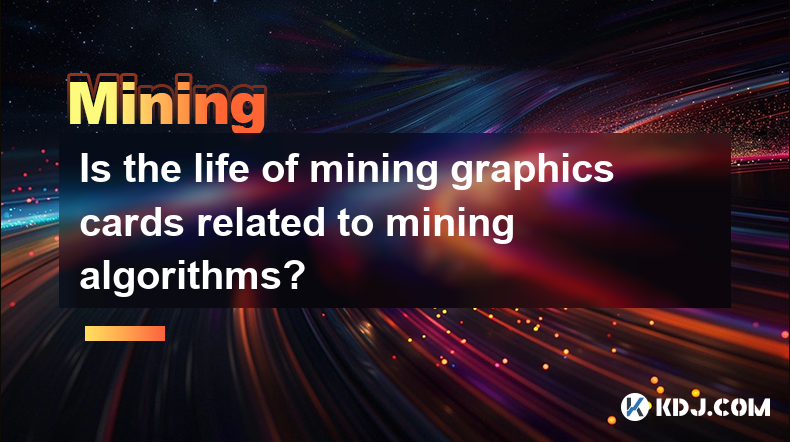
The Intertwined Fate of GPUs and Crypto Mining Algorithms
The lifespan of a graphics card (GPU) used for cryptocurrency mining is intrinsically linked to the mining algorithm it's tasked with. Different algorithms place varying demands on GPU hardware, impacting performance, heat generation, and ultimately, longevity. Understanding this relationship is crucial for miners seeking to maximize their ROI and minimize hardware replacement costs.
The core of the matter lies in the computational demands of each algorithm. Some algorithms, like Ethash (formerly used for Ethereum), are designed to be memory-intensive. This means GPUs with large amounts of VRAM (video RAM) and high memory bandwidth are favored. Prolonged, high-intensity memory operations can lead to accelerated wear and tear, shortening the lifespan compared to less demanding algorithms.
Conversely, algorithms focusing heavily on compute power (like those used for some less prominent cryptocurrencies) may stress the processing units (CUDA cores in NVIDIA GPUs or Stream Processors in AMD GPUs) more intensely. This can result in higher temperatures and increased risk of component failure, potentially reducing the card's operational life. The type of algorithm directly influences which GPU specifications are most critical for efficient and long-lasting mining.
Furthermore, the evolution of mining algorithms plays a significant role. Algorithm updates or changes can render previously efficient GPUs less effective, forcing miners to upgrade or face reduced profitability, indirectly impacting their lifespan as they might be pushed to their limits to compensate for lower returns. A GPU perfectly suited for one algorithm might become obsolete or less profitable with an algorithm shift, leading to early retirement.
Algorithm-Specific GPU Wear and Tear
Let's delve into specific examples. Ethash, as mentioned, was notorious for its memory-intensive nature. Miners frequently used high-VRAM GPUs like the RTX 3090 and AMD Radeon RX 6900 XT. The constant, high-bandwidth memory access inherent in Ethash contributed to increased heat and potential memory degradation, potentially reducing the lifespan of these cards compared to their use in less demanding applications.
In contrast, some other algorithms might prioritize compute power. These algorithms may favor GPUs with a high number of CUDA cores or Stream Processors. While memory might be less of a bottleneck, sustained high utilization of these processing units can lead to increased heat generation and potential wear on the GPU's transistors. This highlights the importance of proper cooling and monitoring to mitigate the effects of algorithm-specific stress.
The constant search for more efficient mining algorithms also impacts GPU lifespan. As developers create new algorithms designed to be ASIC-resistant (resistant to specialized mining hardware), the computational demands shift, necessitating different GPU characteristics for optimal performance. This continuous evolution means that a GPU optimized for today's algorithms may not be as effective—and therefore, may be pushed harder—in the future.
Practical Implications for Miners
The implications for miners are clear: Choosing the right GPU for a specific algorithm is paramount. Simply buying the most powerful GPU on the market isn't always the best strategy. A GPU with excessive VRAM might be overkill for a compute-intensive algorithm, leading to unnecessary power consumption and heat generation without a commensurate increase in profitability.
Effective cooling solutions are crucial, regardless of the algorithm. High temperatures accelerate component degradation, significantly shortening the lifespan of any GPU. Miners should invest in robust cooling systems, including case fans, radiators, and potentially liquid cooling solutions, to maintain optimal operating temperatures.
Regular monitoring of GPU health is also essential. Tools can track temperatures, fan speeds, and other vital metrics. Early detection of potential problems, such as overheating or memory errors, can allow for preventative measures, potentially extending the GPU's lifespan. Proactive maintenance is key to maximizing the return on investment in mining hardware.
Step-by-Step Guide to Extending GPU Lifespan in Mining
- Research the Algorithm: Before purchasing GPUs, thoroughly research the specific cryptocurrency mining algorithm you intend to use. Identify its computational demands (memory-intensive, compute-intensive, etc.).
- Choose Appropriate GPUs: Select GPUs that are well-suited to the algorithm's demands. Don't overspend on features you won't utilize.
- Implement Robust Cooling: Invest in high-quality cooling solutions to keep GPU temperatures within safe operating ranges.
- Monitor GPU Health: Regularly monitor GPU temperatures, fan speeds, and other relevant metrics using monitoring software.
- Address Issues Promptly: Address any potential issues, such as overheating or errors, promptly to prevent further damage.
- Underclocking: Consider underclocking your GPUs to reduce heat and stress, potentially extending their lifespan at a slight cost to hashrate.
- Regular Cleaning: Keep your mining rig clean from dust accumulation to ensure optimal cooling performance.
Frequently Asked Questions
Q: Does using a GPU for mining shorten its lifespan compared to gaming?
A: Yes, cryptocurrency mining generally puts significantly more stress on GPUs than gaming. The constant, high-intensity workload leads to increased heat and wear, reducing lifespan.
Q: Can I use any GPU for any mining algorithm?
A: While you can technically use any GPU, efficiency varies greatly. Using a GPU not well-suited to the algorithm leads to reduced profitability and potentially increased wear and tear.
Q: How can I tell if my mining GPU is nearing the end of its life?
A: Look for signs like consistently high temperatures, frequent crashes, error messages, or a significant drop in hashrate. Monitoring software can help detect these issues early.
Q: Are there algorithms less damaging to GPUs?
A: Yes, algorithms that are less memory or compute-intensive will generally put less stress on the hardware. However, the profitability of mining different coins will also vary, influencing the choice of algorithm and thus the GPU lifespan.
Q: What role does power consumption play in GPU lifespan?
A: High power consumption leads to more heat generation, which is a major factor in reducing GPU lifespan. Efficient cooling and potentially underclocking can help mitigate this.
Disclaimer:info@kdj.com
The information provided is not trading advice. kdj.com does not assume any responsibility for any investments made based on the information provided in this article. Cryptocurrencies are highly volatile and it is highly recommended that you invest with caution after thorough research!
If you believe that the content used on this website infringes your copyright, please contact us immediately (info@kdj.com) and we will delete it promptly.
- World Liberty Financial (WLFI), the Trump family’s crypto project, is planning to release a stablecoin
- 2025-04-09 03:50:12
- BlackRock's Ethereum-native tokenized money market fund has more than tripled in value over the past three weeks, nearing the $2 billion mark
- 2025-04-09 03:50:12
- PancakeSwap Burns Over 330,000 CAKE Tokens, Binance CZ Reacts
- 2025-04-09 03:45:12
- 5 Meme Coins That Have Stood the Test of Time and Volatility
- 2025-04-09 03:45:12
- Title: According to the National Security Bureau, China has spread misinformation about Taiwan on the island in order to share generative artificial intelligence (AI).
- 2025-04-09 03:40:13
- Dogecoin (DOGE) Price Plunges Amid Technical Shifts and Whale Activity
- 2025-04-09 03:40:13
Related knowledge
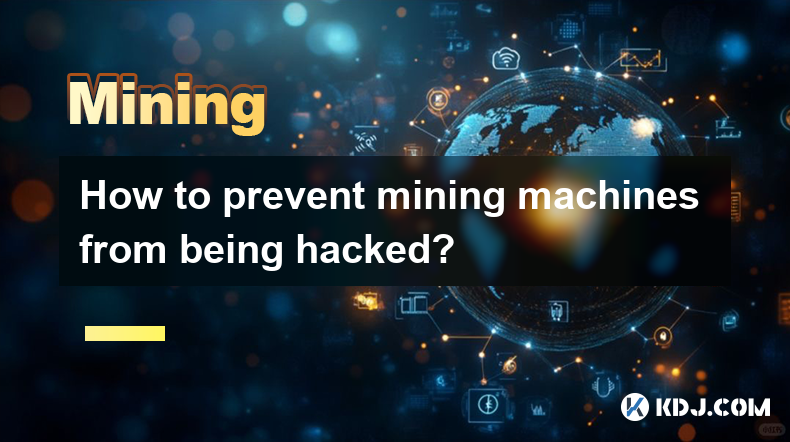
How to prevent mining machines from being hacked?
Apr 08,2025 at 09:00pm
In the world of cryptocurrency, mining machines play a crucial role in securing networks and validating transactions. However, these machines are also prime targets for hackers looking to exploit vulnerabilities for financial gain. Preventing mining machines from being hacked requires a multi-faceted approach that includes robust security measures, regu...
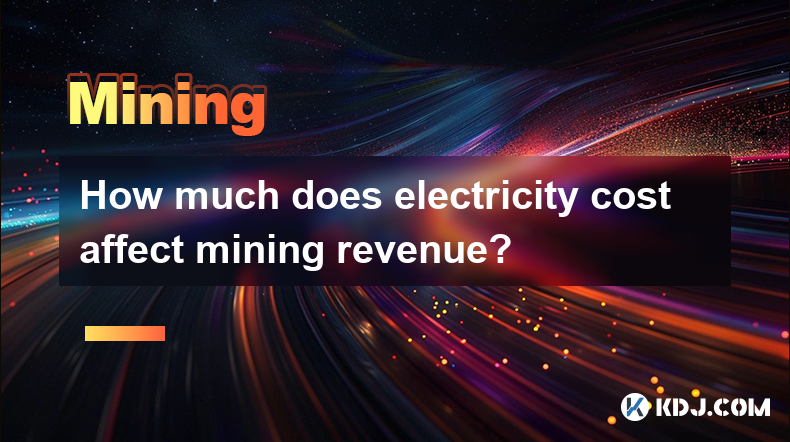
How much does electricity cost affect mining revenue?
Apr 08,2025 at 05:29pm
The cost of electricity plays a crucial role in determining the profitability of cryptocurrency mining. Mining revenue is directly impacted by the expenses incurred in running mining equipment, with electricity costs often being the most significant operational expense. Understanding how electricity costs affect mining revenue is essential for miners lo...
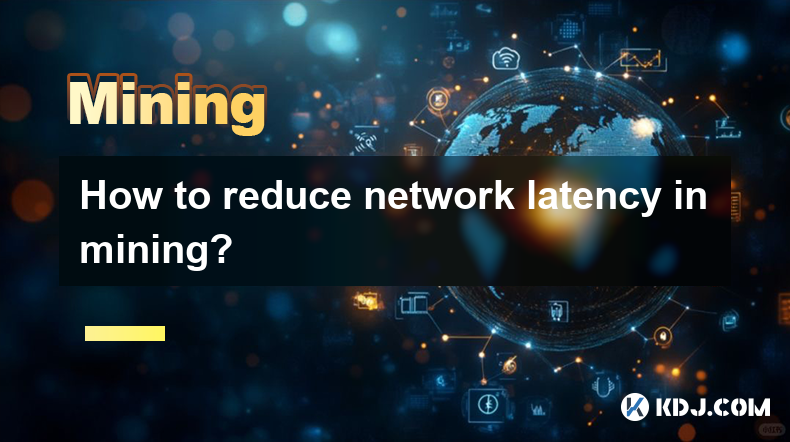
How to reduce network latency in mining?
Apr 09,2025 at 02:28am
Understanding Network Latency in MiningNetwork latency is a critical factor in the world of cryptocurrency mining. It refers to the time it takes for data to travel from its source to its destination across a network. In mining, lower latency can mean the difference between successfully adding a block to the blockchain and missing out on the reward. Red...
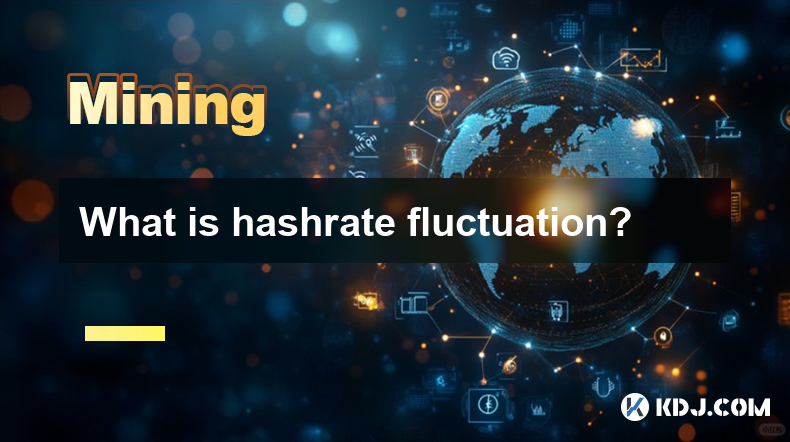
What is hashrate fluctuation?
Apr 08,2025 at 08:08pm
Hashrate fluctuation refers to the changes in the total computational power used by miners to process transactions and secure the blockchain network. This metric is crucial in the cryptocurrency world, particularly for networks like Bitcoin, Ethereum, and others that rely on proof-of-work (PoW) consensus mechanisms. Understanding hashrate fluctuation is...

Why does mining require a full node?
Apr 08,2025 at 06:49pm
Mining in the cryptocurrency world is a complex process that involves verifying transactions and adding them to the blockchain. One of the key components required for mining is a full node. But why is a full node necessary for mining? Let's delve into the reasons and explore the intricacies of this requirement. What is a Full Node?A full node is a progr...
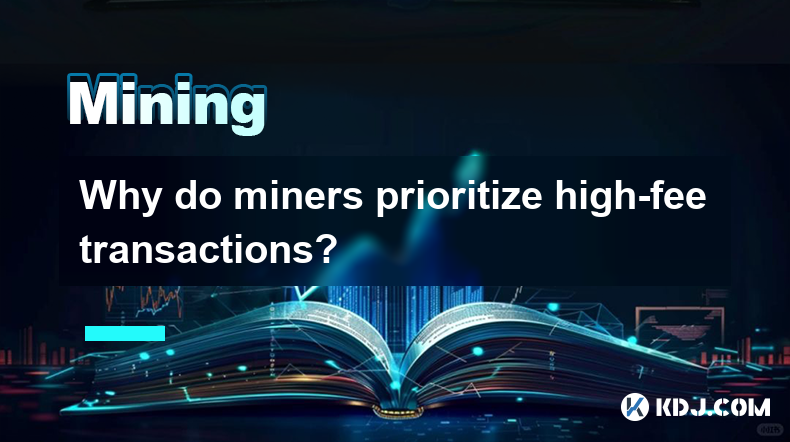
Why do miners prioritize high-fee transactions?
Apr 08,2025 at 05:01pm
Miners in the cryptocurrency ecosystem, particularly in networks like Bitcoin, play a crucial role in validating and adding transactions to the blockchain. One of the key factors that influence their decision-making process is the transaction fee associated with each transaction. Miners prioritize high-fee transactions primarily because these fees direc...

How to prevent mining machines from being hacked?
Apr 08,2025 at 09:00pm
In the world of cryptocurrency, mining machines play a crucial role in securing networks and validating transactions. However, these machines are also prime targets for hackers looking to exploit vulnerabilities for financial gain. Preventing mining machines from being hacked requires a multi-faceted approach that includes robust security measures, regu...

How much does electricity cost affect mining revenue?
Apr 08,2025 at 05:29pm
The cost of electricity plays a crucial role in determining the profitability of cryptocurrency mining. Mining revenue is directly impacted by the expenses incurred in running mining equipment, with electricity costs often being the most significant operational expense. Understanding how electricity costs affect mining revenue is essential for miners lo...

How to reduce network latency in mining?
Apr 09,2025 at 02:28am
Understanding Network Latency in MiningNetwork latency is a critical factor in the world of cryptocurrency mining. It refers to the time it takes for data to travel from its source to its destination across a network. In mining, lower latency can mean the difference between successfully adding a block to the blockchain and missing out on the reward. Red...

What is hashrate fluctuation?
Apr 08,2025 at 08:08pm
Hashrate fluctuation refers to the changes in the total computational power used by miners to process transactions and secure the blockchain network. This metric is crucial in the cryptocurrency world, particularly for networks like Bitcoin, Ethereum, and others that rely on proof-of-work (PoW) consensus mechanisms. Understanding hashrate fluctuation is...

Why does mining require a full node?
Apr 08,2025 at 06:49pm
Mining in the cryptocurrency world is a complex process that involves verifying transactions and adding them to the blockchain. One of the key components required for mining is a full node. But why is a full node necessary for mining? Let's delve into the reasons and explore the intricacies of this requirement. What is a Full Node?A full node is a progr...

Why do miners prioritize high-fee transactions?
Apr 08,2025 at 05:01pm
Miners in the cryptocurrency ecosystem, particularly in networks like Bitcoin, play a crucial role in validating and adding transactions to the blockchain. One of the key factors that influence their decision-making process is the transaction fee associated with each transaction. Miners prioritize high-fee transactions primarily because these fees direc...
See all articles






















































































